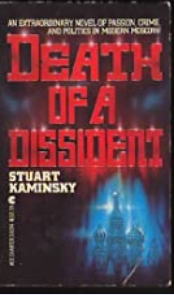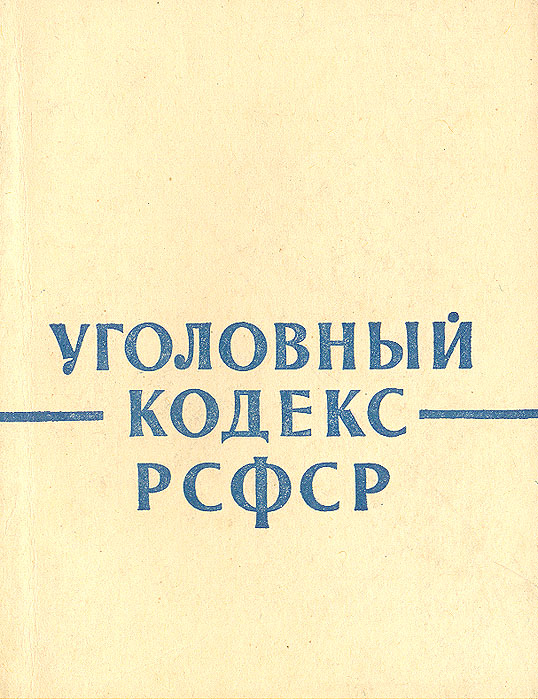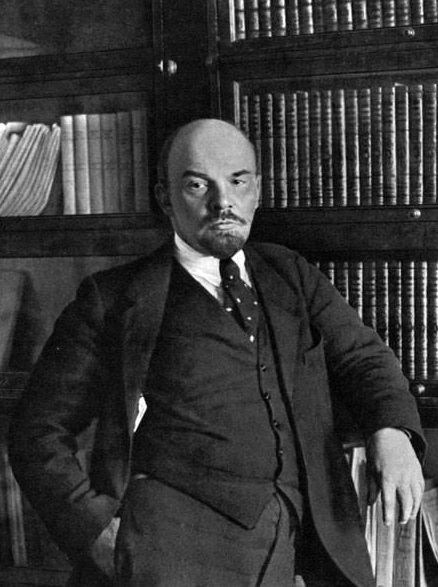
Fancy a little pre-Christmas quiz? This is one for lovers of Russia-in-fiction detective stories. There is only one question, and it is an absolute doddle.
If the first murder victim in a Russia-in-fiction detective thriller is killed with a sickle, how will the second murder victim meet their grisly end?
Of course, to give you the answer might be seen as a spoiler by some —but I am not really one for this fastidious fad for being horrified at minor plot points being revealed. So here goes, the answer is …
… they get their head caved in by a hammer.
Death of a Dissident is the first in the 16-book Inspector Rostnikov series written by the prolific Stuart Kaminsky, who wrote 63 detective books and 11 works of non-fiction between 1972 and his death in 2009.
The novel (also published as Rostnikov’s Corpse) is not quite so flimsy a work as such prolificacy might suggest. There is a lot packed into what seems a deceptively light and short story; particularly when it is read from the Russia-in-fiction perspective.
Set in late Brezhnev-era Moscow, the book fascinates as one can both note how aspects of the Soviet setting fit into the detective fiction genre, and draw parallels with how Russia today is presented in fiction. The Moscow detail convinces, and —lest we get too worthy— the genre-defining whodunnit storyline keeps the pages turning.
Much of this is present in the first chapter.
There is the character of Granovsky the dissident, who ‘once a teacher, was now an enemy of the state’ (p. 2). Granovsky is drawn as a certain type of archetypal dissident —obsessed with principle, not much fun, ‘a tall, dark crow of a man who never smiled’. He welcomes his upcoming trial as a climactic event in the drama in which he plays the lead.
When we meet him, he is walking up and down in his flat
… as he paced the wooden floor of his living room, the ceiling of the apartment below shook. Part of the fault was in the construction of the 20-year-old building; bribes and bribe-taking had resulted in corners being cut and floors having less insulation than had been specified. However, part of the fault also belonged to Granovsky, who refused to put even an old rug on the floor to cut down the noise of his nightly pacing.
The old Chernovs on the fifth floor had once complained to the manager of the building’s housing committee and they had been visited by the KGB, the Committee for State Security —a rather extreme reaction, they thought, to so simple a complaint. As Granovsky became more famous in the neighbourhood and the world for his dissident ideas, the Chernovs learnt to suffer his noise in silence rather than risk another visit from the KGB man with a flat nose who made them feel guilty. Besides, their complaint had had no effect on Granovsky’s pacing.
Death of a dissident, pp. 2-3
Whilst the dissident paces inside, a young KGB officer —with the wonderful Soviet-cum-Dickensian name, Khrapenko— is standing outside in the Moscow winter, tasked with watching the apartment building.
His father before him had been in the KGB and had known Beria. The elder Khrapenko had a reputation for loyalty and little intellect and had never risen very high above the lowest rank. His son was credited with carrying on the family tradition.
Death of a dissident, p. 8

The Russia-in-fiction aspect to Death of a Dissident does not stop at its setting. There is more to it than Moscow being cold, buildings being badly built, and the emblems of the Soviet state becoming murder weapons.
When our hero, Inspector Rostnikov, is called in, he does not just puzzle over the identity of the murderer, he also has to work out the bureaucratic and political manoeuvres in play.

All enquiries are based on the assumption that “every person who commits a crime is punished justly, and not a single innocent person subjected to criminal proceedings is convicted”.
As Kaminsky amusingly observes
this is repeated so frequently by judges, procurators, and police that almost everyone in Moscow is sure it cannot be true.
death of a dissident, p. 10
Inspector Rostnikov’s superior is Procurator Anna Timofeyeva; another immediately recognisable character
a thick box of a woman, about 50, officious and hard-working …
Such great difficulties existed in establishing a new moral order. Exactly how extensive those difficulties were in the case of crime was somewhat of a mystery even to Procurator Timofeyeva since statistics were never made public. However, judging from the pile of reports on her desk, the difficulties were extensive …
The pile never got smaller in spite of the 18 hours a day the procurator put in …
Above her head, on the wall, was a picture of Lenin as a young man, emerging from his cell-like room with wan smile. Rostnikov had long ago concluded that the picture was not just a political necessity but a source of inspiration to Comrade Timofeyeva. He sometimes imagined her as a happy convert to the religion of Communism. He had, however, learnt to have great respect for her zeal and ability.
death of a dissident, pp. 11-14

This review has quoted a lot already from just the first chapter of Death of a Dissident. Kaminsky wastes no time in establishing a level of familiarity with Soviet life. As one of Rostnikov’s assistants puts it, ‘Everything is political’.
Why has a police inspector been assigned to an investigation in which the KGB remains involved?
Rostnikov’s attempts to interview a KGB officer in the Lubyanka meet the predictable demonstration of who is really in charge; implied rather than stated, dancing around the formalities and formulas with what is really meant being left unsaid. Colonel Drozhkin knows that Rostnikov has a Jewish wife; a potential career-shaping fault in the not-so-hidden anti-semitism common in Brezhnev’s Russia.
“For many reasons, you are lucky to have the job and responsibility which you have,” said the Colonel, turning once more to face the policeman.
“True of all of us who are fortunate enough to serve the state,” said Rostnikov.
death of a dissident, p. 62
In a plot device that has been used in several Russia-in-fiction novels, a degree of control is exercised over the detective by the fact that his son is serving in the army and could be —or could not be— sent to Afghanistan (or, depending on when the book was published, Chechnya).
Kaminsky also draws a Soviet-era version of the oligarch figure —nowhere near as rich as a post-Soviet oligarch, of course, but rich enough for a recognisably stand-apart luxury and rules-don’t-apply status.
Typical of probably all fictional detectives, Inspector Rostnikov is not one to give in to the implied threats of his superiors or to bow before the riches and power of influential figures. He is a man of intelligence and integrity. His quest to solve the crime unfolds relentlessly in the snow and cold of Moscow in winter.
Death of a Dissident sat on my shelf unread for years. Now I have read it, I will surely entertain myself with further tales of Inspector Rostnikov. Maybe I will even read all 16 …